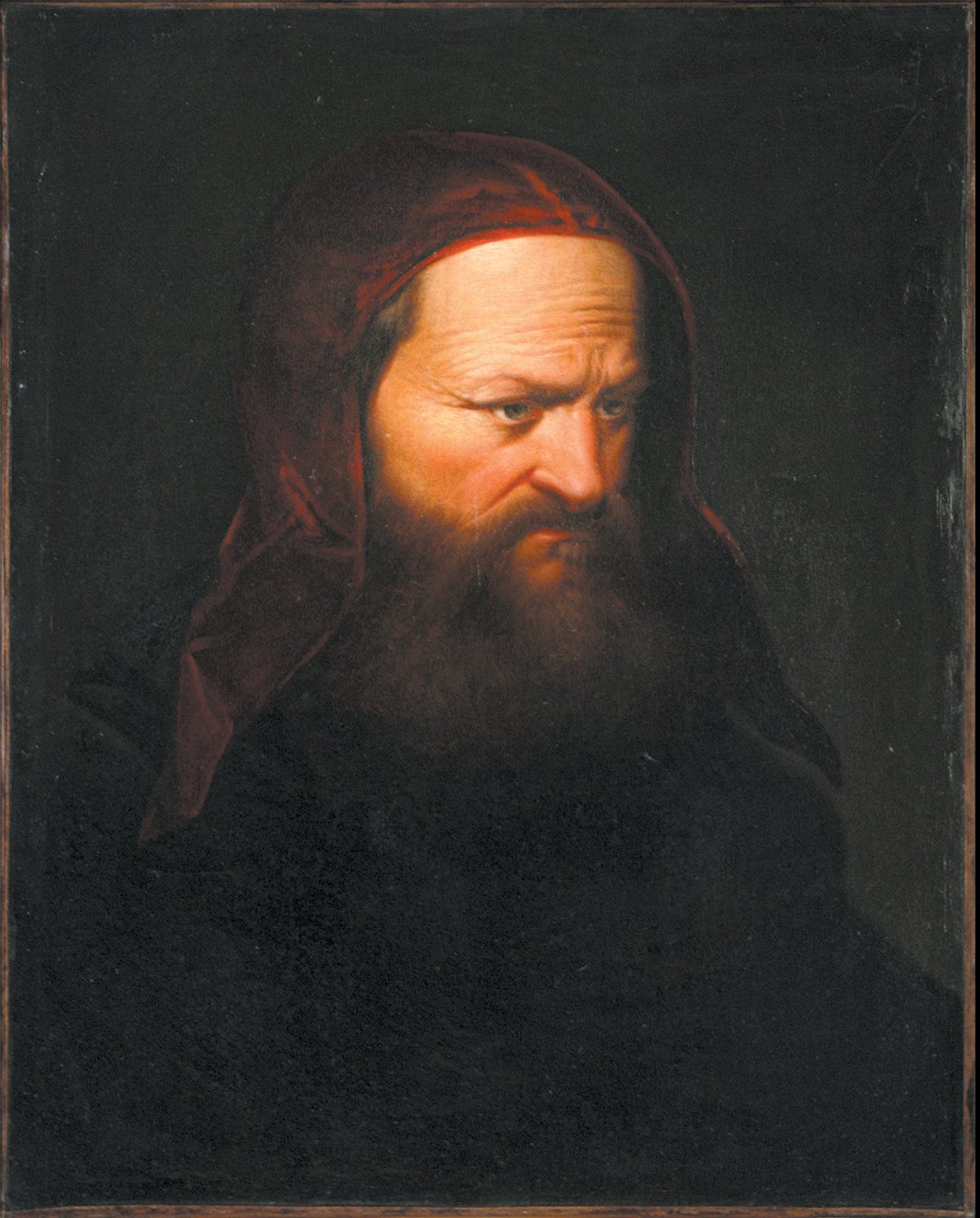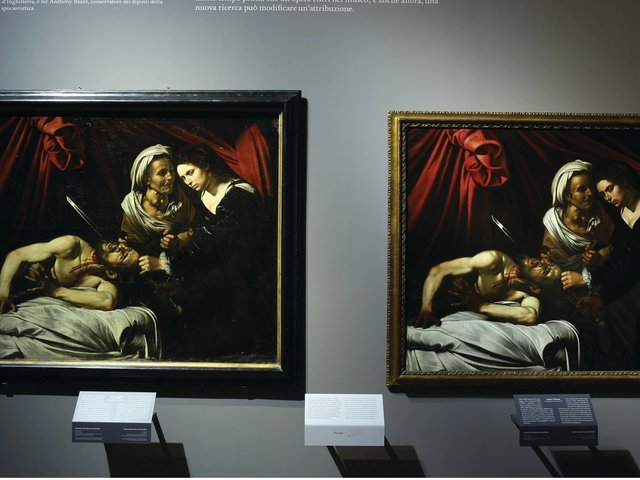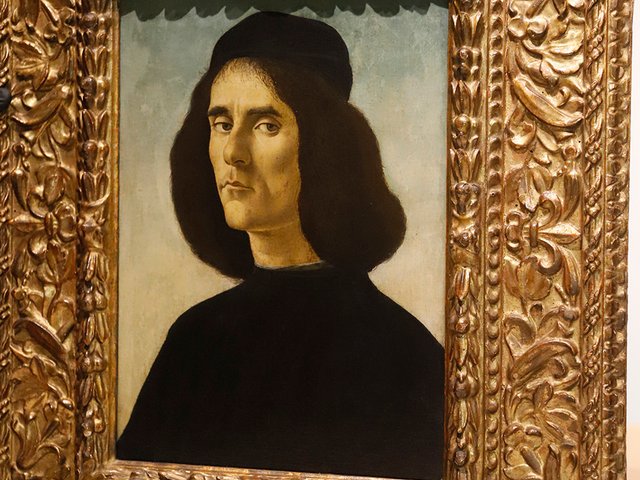The plot is straight out of a thriller: a multi-million-dollar portrait discovered in a French bric-a-brac store; mysterious Russian intermediaries; a sale to Saudi Arabia trumpeted at €107m, but which never happened, and a hitherto unknown art fund run by two entrepreneurs who are selling a stake in it…one of whom has not even seen the picture.
This is just the start of the riotous tale of this portrait on paper, laid down on canvas, which a Russian beauty products manufacturer, Oleg Nasobin, found in the Provençal village of Draguignan in 2005. Having haggled the price down to €3,200 from €4,000, Nasobin carried it home, took off the frame and discovered an inscription, “Tête d’homme, Benvenuto Cellini” in one corner.
From there it was a quick hop, skip and jump to Nasobin deciding it was a self-portrait of the great Renaissance goldsmith, creator of the renowned and extravagant Saliera (Salt Cellar)—despite the portrait having every appearance of being created in the 19th century, with an inscription in French, not Italian.
The story is the subject of a compelling ten-part BBC Radio 3 series Blood and Bronze (to be broadcast between 22 March and 2 April and available on BBC Sounds afterwards) researched, written and narrated by Jerry Brotton, a professor of Renaissance studies at Queen Mary University in London.
Nasobin is described as a collector, actor, blogger and publicist on the Russian website Rucompromat. He had a part in the British TV series McMafia in 2017, but for years also ran a cosmetics business, Green Mama, in France. He recounts his story in a thriller, Benvenuto: the Mystery of one Picture, and he claims all the events in it are absolutely true. The Russian press has reported on the difficulties of the company, and even some disagreements with Russian banks, leading to a lawsuit.
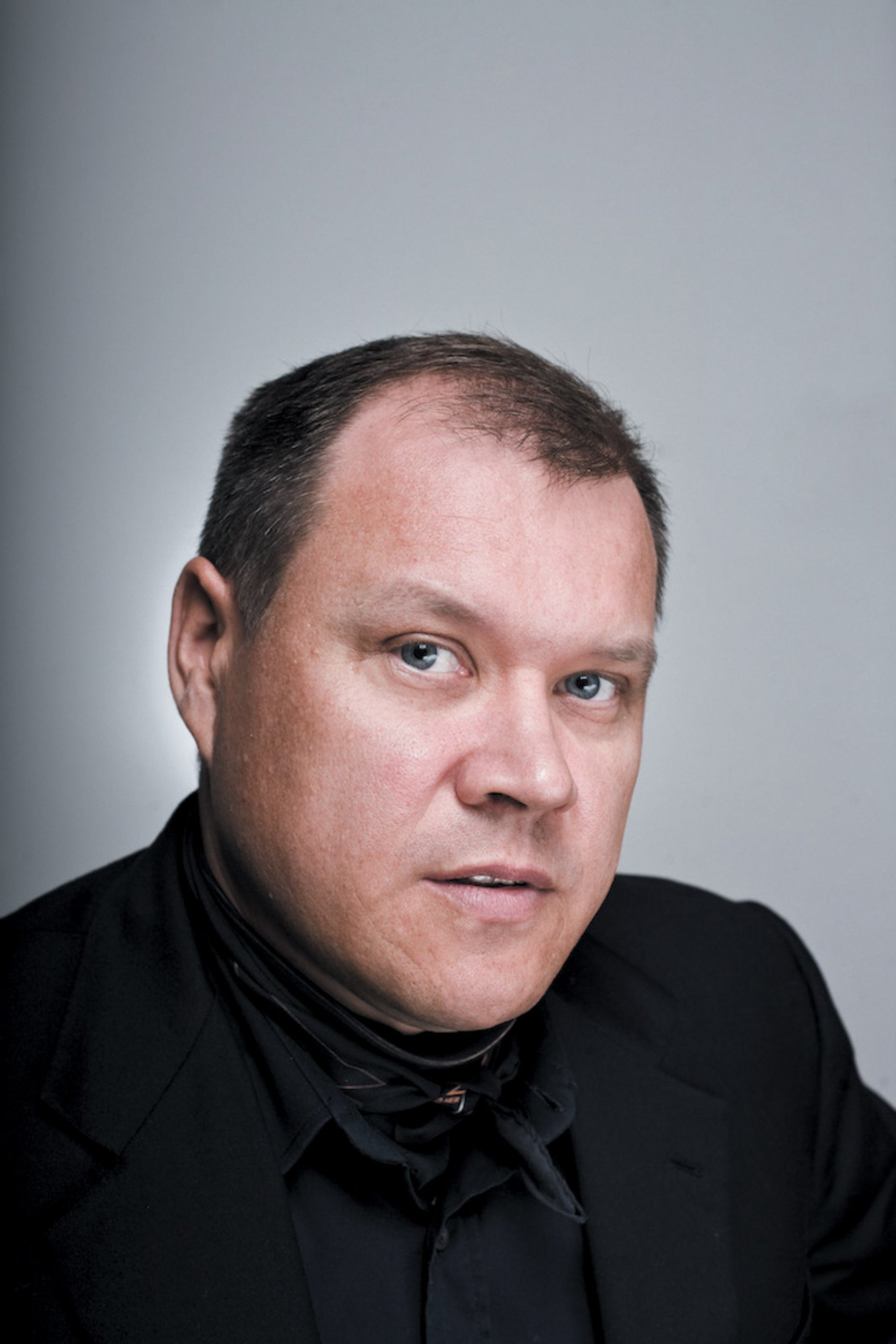
Russian beauty products manufacturer Oleg Nasobin © Valeriy Levitin/Sputnik
Mysterious authentication
Meanwhile Nasobin was working on the portrait, calling on a succession of experts to authenticate it. These included a now retired dealer in the south of France, Richard David (“court-appointed expert in antiques, objets d’art and jewellery”) who delivered a certificate affirming the work is a 16th-century self-portrait of Cellini; a study of facial characteristics by a French academic, Raoul Perrot; paint analysis by a Parisian laboratory and a report from the British conservator Sarah Walden, who wrote that the portrait “undoubtedly” dated from the 16th century, although she also said the inscription was 19th century. All initially responded to contacts from The Art Newspaper, but all but Perrot broke off correspondence when asked for further information about how they arrived at their conclusions.
In 2007 Nasobin organised a press conference to present his discovery to the world, pricing it at €60m; he was disappointed with the lack of impact, although the Daily Telegraph did write one article about it.
Then, in 2018, and through intermediaries, Nasobin sent the picture to the equally colourful Mikhail Tamoikin. The Russia & America Goodwill Association starts a 2016 article about him as follows: “Last August Mikhail Tamoikin was kidnapped at gunpoint in the centre of Kiev, chained and dragged into a car, taken to a boat, where he was beaten and tortured. Miraculously he managed to escape by jumping into the river and swimming for 12km to safety.”
What had he done to deserve this? The article continued: “He single-handedly stopped perhaps the largest illegal sale of ancient gold artefacts in the world, worth over half a billion dollars. It was organised by corrupt high-ranking Ukrainian officials, police officers and organised crimes groups, who are still after Mikhail to this day.”
The Saudi connection
When not fighting corruption, the Tamoikins, father Mikhail and son Dmitry, run the Tamoikin Art Fund. Using their Tamoikin Expert System, they appraised the “Cellini” at an oddly precise €56,487,902. They then used various coefficients such as the price made by Leonardo da Vinci’s Salvador Mundi to arrive at the final price of €106.79m and agreed to promote the painting on behalf of Nasobin.
According to a WordPress blog published in 2018, the National Museum of Saudi Arabia was planning to buy the portrait at that price. The blog included a (seemingly photoshopped) screenshot from the Saudi Press Agency (SPA). Efforts by The Art Newspaper to identify the writer of the blog were unsuccessful.
It was at this point that Brotton found the story and contacted Dmitry Tamoikin. He revealed that he had not actually seen the painting and that it had not in fact sold to Saudi Arabia, that Nasobin had broken off communications prior to this “sale” and that the fund is now in dispute with Nasobin and is seeking to sell its “contractual position” in the work for €1.5m, on account of their expenses in the project.
At publication time, Brotton was in contact with Oleg Nasobin, but had not been able to speak to Mikhael Tamoikin. Asked by Brotton if he really thought the portrait was genuine, Dimitry Tamoikin said: “That’s the €107m question,” adding: “You couldn’t make this stuff up!” Quite.
UPDATE 12 March: We received the following statement from Oleg Nasobin after publication:
"When I found the inscription, written in graphite pencil on a card inside the frame—I would like to specify not on the painting itself — which said that the portrait depicted “Benvenuto Cellini head of a man,” in French, I did not jump to the conclusion that it was his work nor that it was his face.
"This seemed very far fetched and I was in fact highly skeptical, what someone may have written on a piece of paper in the 19th or 20th century does not mean anything, of course.

The inscription © Oleg Nasobin
"However, this inscription was very intriguing and prompted me to begin my research, which found that Cellini hid his own self portraits in his works. That this portrait was a self-portrait was not only my opinion, but shared by the Italian state; in 2005 it began official talks with the Italian ambassador to Russia in Moscow, Gianfranco Facco-Bonetti. These talks were with the ambassador personally, and would certainly not have started if the Italian state was not certain of the painting’s authenticity.
"Our portrait acted as a key, it allowed us, the researchers, to find a total of eight other self-portraits in Cellini’s works and two portraits of Cellini by other artists, specifically by Paris Bordone whose sitters were previously unknown (The Lovers and Portrait of a Jeweller, in which Cellini is depicted without a beard and without an embellished underbite as is common in his self-portraits). When you compare our portrait to that of the drawing known only as “head of a man” by Cellini housed in the Biblioteca Reale of Turin, it becomes evident, even to the naked eye, that this it is indeed the same face. It is also a self-portrait.
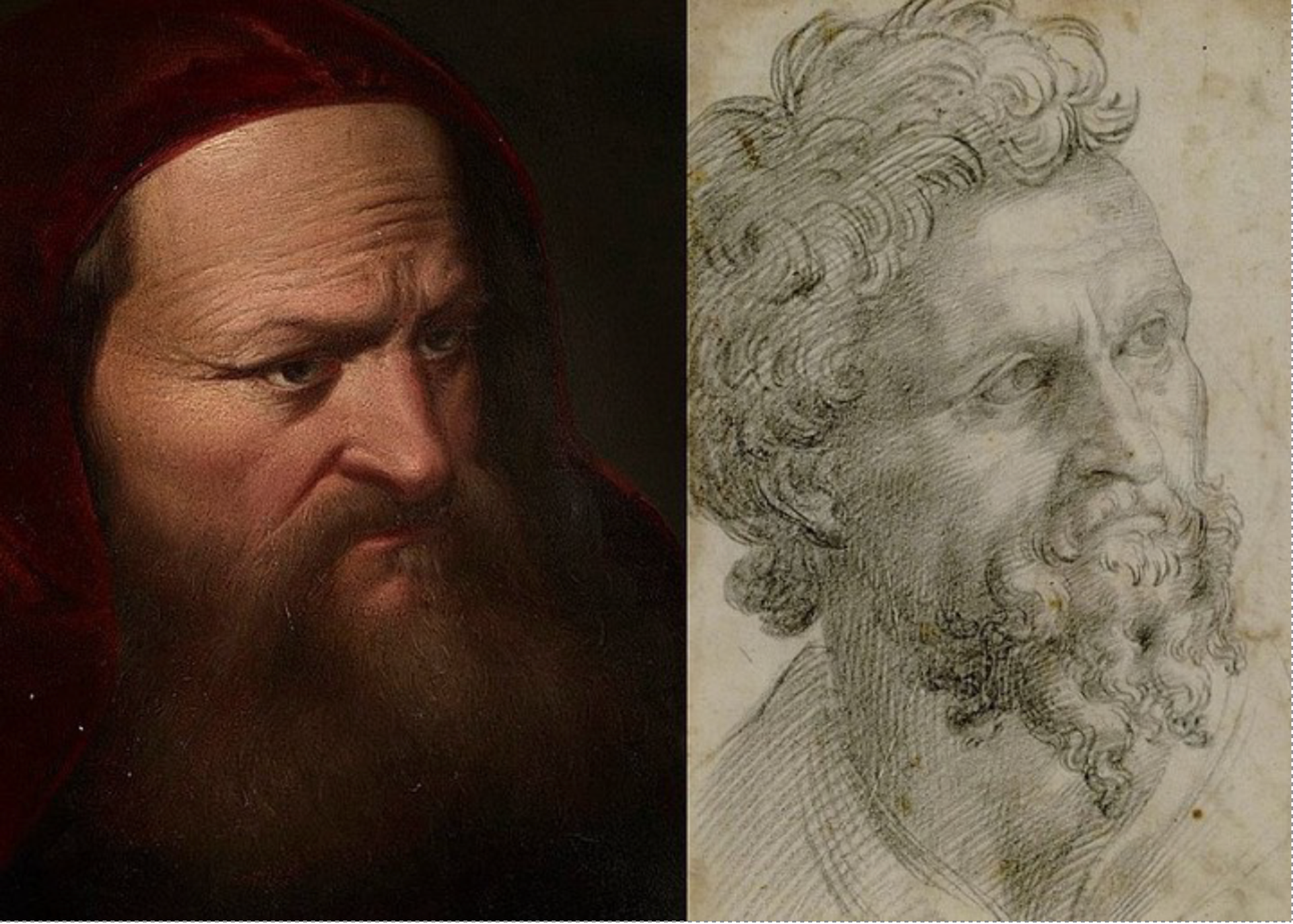
“Head of a man” by Cellini in the Biblioteca Reale of Turin (right)
"Depicted stylistically the same, we see that Cellini, much like in his autobiography, always portrayed himself in a heroic light. This is fascinating because art history, hitherto, did not know what Cellini looked like in his younger years.
"I personally do not have the authority to financially appraise this work of art and have relied on others’ opinions on this matter. What matters most to my family and me is that Cellini’s face is brought back into public view, since this is clearly what he wanted. That is why he left his face on the back of the head of Perseus, or why, upon his death, his notary listed a portrait of him as part of his estate, which according to the notary’s ledger, hung in the entrance hall of Cellini’s home.
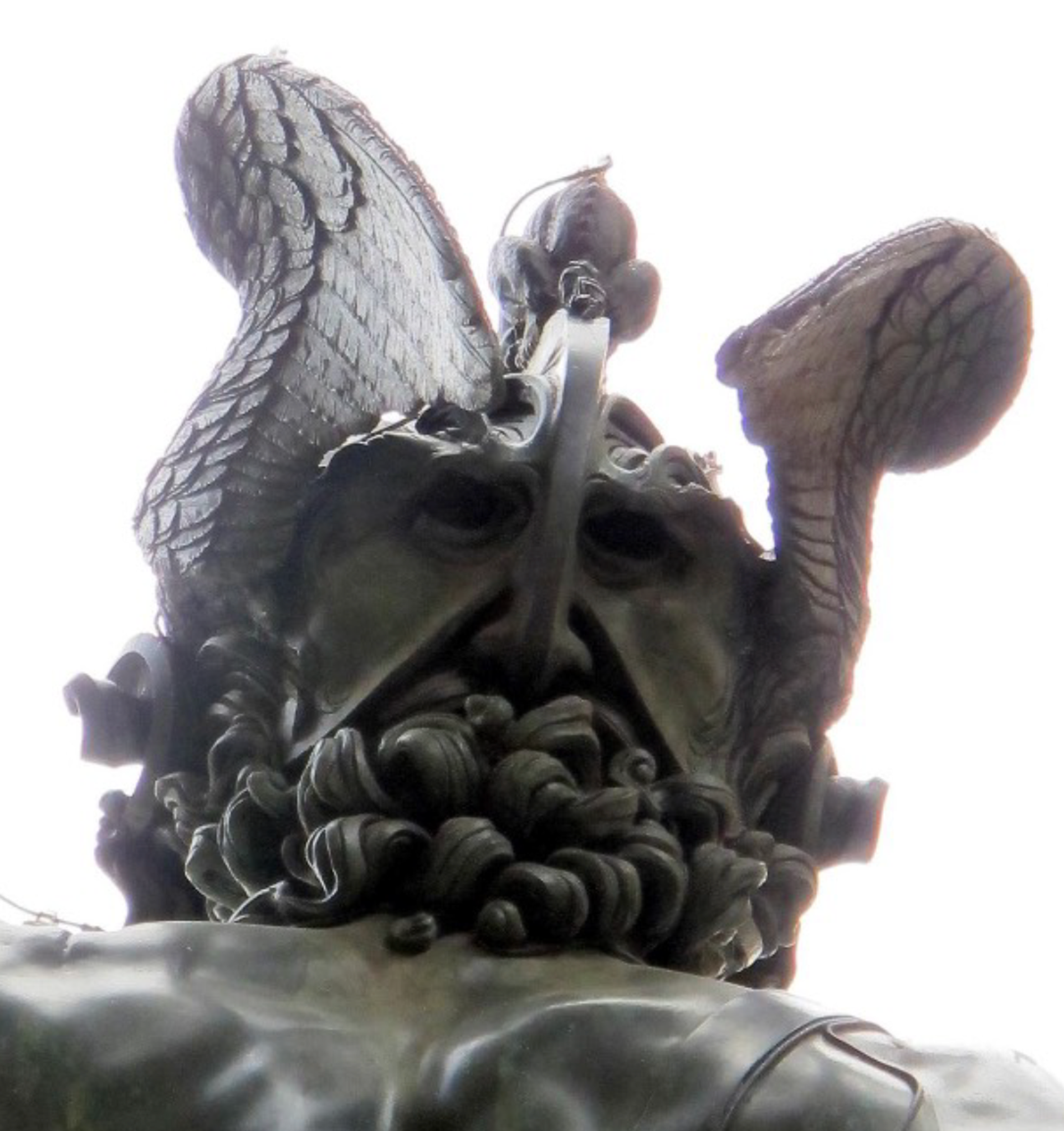
Perseus' helmet with a self-portrait of Cellini on the back
"Our cooperation with the Tamoikin Art Fund had a contractual expiry date, which ended more than two years ago. I hope that people look at the art first, not at the colourful characters involved in this story as has been done in the past. I am not a financier at heart, but in reality, I am also an expert in art history and even a museologist. I was hired as a senior researcher and expert in art against money laundering in the Russian drug enforcement division. My work oversaw the expertises offered by experts.
"I would have loved to have been contacted prior to the publication of this article, which omitted, in my opinion, some of the most important parts of my research focusing instead on rumours surrounding the portrait, such as a “sale” to the Saudi state. I believe that this portrait does not belong to me, it belongs to eternity, and humanity as a whole. This is a powerful artwork, a painting on paper, meaning it was not intended for a patron, but rather for personal use. It offers us incredible insight into Cellini’s legacy, which has unfortunately been lost over the centuries, just like we have forgotten Cellini’s true face, as the late John Pope Hennessy said in his book about Cellini.
"To support this theory I had independent sets of analyses carried out: material analyses of pigments and conditional reports. All of which are objective in nature and draw the same conclusion: it's from the 16th century, and, indeed, it is Cellini’s face. These analyses were carried out by eminent experts from France, England and Italy.
"Despite all the analysis we have already carried out on the painting at personal expense, we invite further study by experts of course. This would be very interesting for the art history community indeed, and hopefully, will bring Cellini to his rightful place in our collective understanding of him."
UPDATE 6 April: We received the following statement from Mikhail Tamoikin after publication:
"This painting was in the public eye since 2007. It’s not a coincidence that only after the Tamoikin Art Fund became involved in this project the art community as well as the ultra-wealthy art buyers really took interest in Cellini’s portrait. Furthermore, it is important to highlight that shortly after Nasobin broke off contact with our fund a buyer from one of the wealthiest Middle Eastern nations approached us and expressed serious interest to purchase the self-portrait by Benvenuto Cellini for €107m. Unfortunately, we had to inform him that the owner stopped communicating with us and the entire deal fell through.
"In the statement from Oleg Nasobin that was published, he said the following: "Our cooperation with the Tamoikin Art Fund had a contractual expiry date, which ended more than two years ago.” This statement is only partially true. The contract that we signed did have an expiry date however certain parts of that agreement were not limited by that expiration date and thus did not expire. This is nothing unusual or rare. Due to this, Nasobin has obligations towards us and subsequently we have liens against the self-portrait of Benvenuto Cellini."
• Blood and Bronze will be broadcast on BBC Radio 3 between 22 March and 2 April


